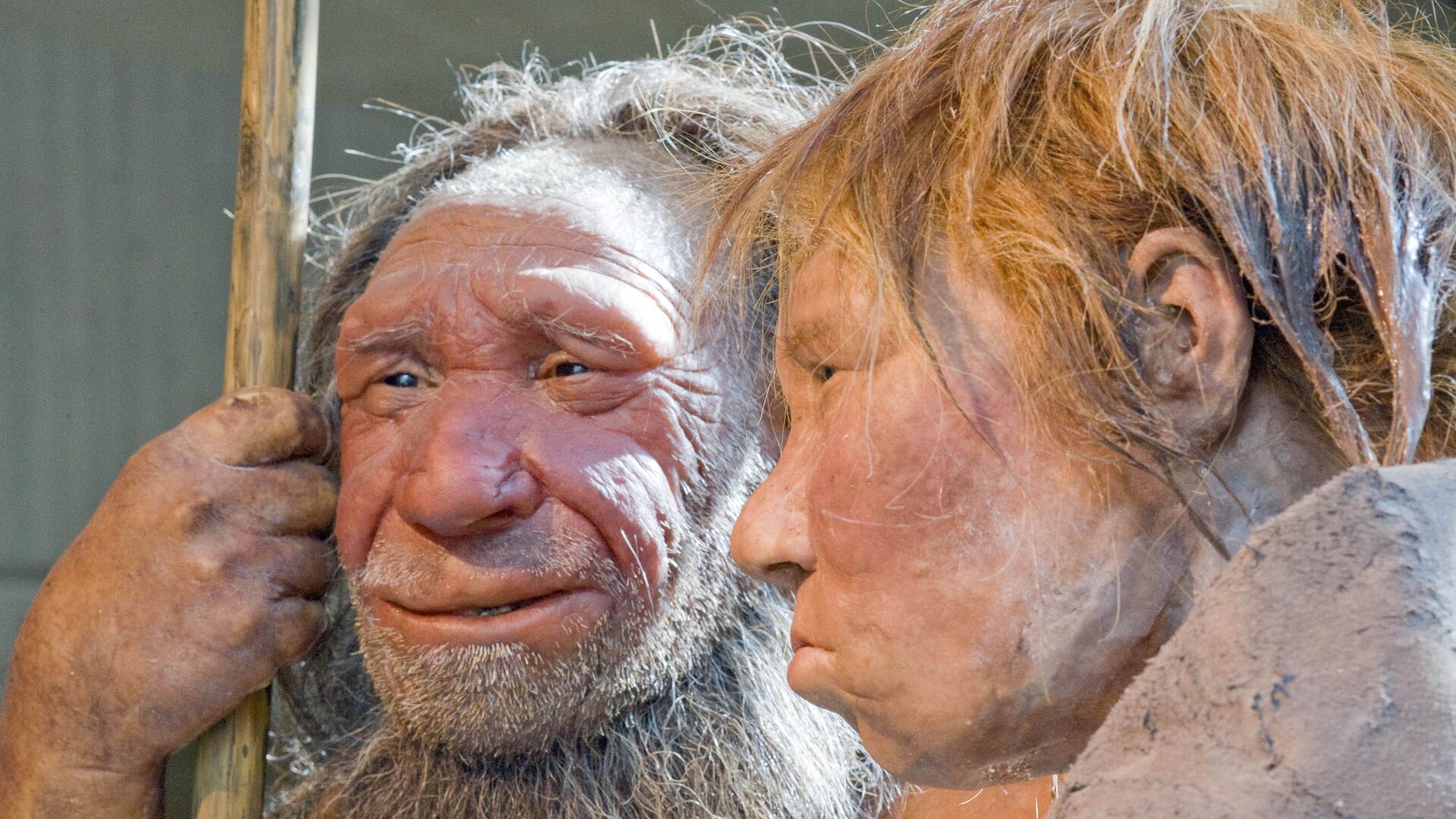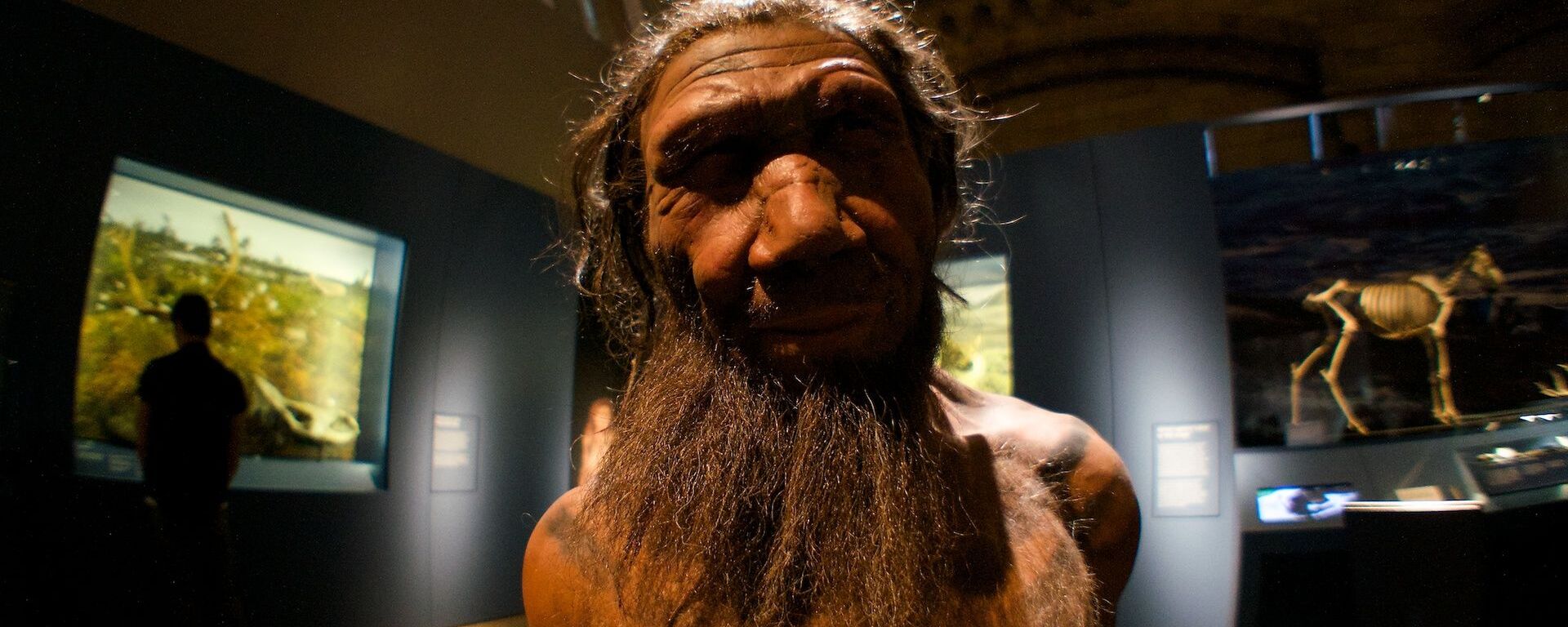https://sputnikglobe.com/20221020/secrets-of-ancient-neanderthal-family-uncovered-through-dna-analysis-1102456155.html
Secrets of Ancient Neanderthal Family Uncovered Through DNA Analysis
Secrets of Ancient Neanderthal Family Uncovered Through DNA Analysis
Sputnik International
Studying the DNA extracted from the bones of a group of Neanderthals yielded information about the family structure and genetic diversity within the community. 20.10.2022, Sputnik International
2022-10-20T12:36+0000
2022-10-20T12:36+0000
2022-10-20T12:36+0000
science & tech
neanderthals
family
remains
study
https://cdn1.img.sputnikglobe.com/img/104275/25/1042752599_0:241:3992:2487_1920x0_80_0_0_746c96a7e723037b7968397219673137.jpg
Having studied multiple Neanderthal remains found in the vicinity of the Chagyrskaya and Okladnikov caves in Siberia, an international team of researchers managed to gain new insights into the social structure of these long-extinct archaic humans.During the course of their research, the scientists examined the remains of some 13 Neanderthals who lived around 54,000 years ago, isolating and extracting DNA fragments from pieces of ancient bones that survived till this day.Out if the 13 Neanderthal specimens whose remains the team studied, eleven dwelled at the Chagyrskaya cave area, with the majority of them apparently belonging to the same family that included a father, his teenage daughter and a young boy and a woman who seemed to be second-degree relatives, the media outlet notes.A certain genetic condition one of the male Neanderthals had also led team to believe that he was a maternal relative of the father.Further genetic analysis also suggested that the Neanderthal community in question did not interbreed with humans or Denisovans, but rather bred largely among themselves, with their remains exhibiting little genetic diversity.
https://sputnikglobe.com/20210730/neanderthals-could-had-died-out-because-of-sex-with-humans-new-study-suggests-1083494792.html
Sputnik International
feedback@sputniknews.com
+74956456601
MIA „Rossiya Segodnya“
2022
Sputnik International
feedback@sputniknews.com
+74956456601
MIA „Rossiya Segodnya“
News
en_EN
Sputnik International
feedback@sputniknews.com
+74956456601
MIA „Rossiya Segodnya“
Sputnik International
feedback@sputniknews.com
+74956456601
MIA „Rossiya Segodnya“
science & tech, neanderthals, family, remains, study
science & tech, neanderthals, family, remains, study
Secrets of Ancient Neanderthal Family Uncovered Through DNA Analysis
Studying the DNA extracted from the bones of a group of Neanderthals yielded information about the family structure and genetic diversity within the community.
Having studied multiple Neanderthal remains found in the vicinity of the Chagyrskaya and Okladnikov caves in Siberia, an international team of researchers managed to gain new insights into the social structure of these long-extinct archaic humans.
During the course of their research, the scientists examined the remains of some 13 Neanderthals who lived around 54,000 years ago, isolating and extracting DNA fragments from pieces of ancient bones that survived till this day.
"Our study provides a concrete picture of what a Neandertal community may have looked like," Benjamin Peter from the Max Planck Institute said, as quoted by AFP. "It makes Neandertals seem much more human to me."
Out if the 13 Neanderthal specimens whose remains the team studied, eleven dwelled at the Chagyrskaya cave area, with the majority of them apparently belonging to the same family that included a father, his teenage daughter and a young boy and a woman who seemed to be second-degree relatives, the media outlet notes.
A certain genetic condition one of the male Neanderthals had also led team to believe that he was a maternal relative of the father.
Further genetic analysis also suggested that the Neanderthal community in question did not interbreed with humans or Denisovans, but rather bred largely among themselves, with their remains exhibiting little genetic diversity.


